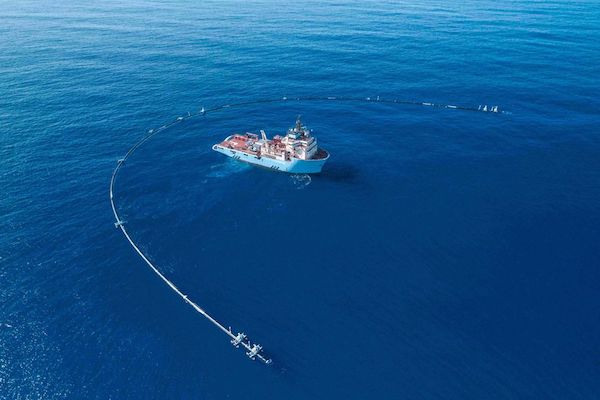
Last November a small seabed-exploration company out of Houston called Ocean Infinity made the discovery of a lifetime–or so it seemed, until it made another three months later. First, Ocean Infinity successfully located the remains of the San Juan, an Argentine navy sub that had vanished while on patrol. Then it found the wreck of the Stellar Daisy, a South Korean bulk ore carrier. Both vessels had been missing for more than a year, which often means a wreck won’t ever be found. The two-year-old company’s secret was teamwork: a set of eight drone subs working in tandem to scan a much larger area in record time.
These successes could be part of a broader shift in how humanity understands the sea. We know far more about the surface of Mars than we do about the bottom of the ocean, but seabed-scanning technology is growing sophisticated enough to render the inky depths much more transparent. Seabed 2030, a joint project of two nonprofits, aims to map the entire ocean floor by its namesake year. Key to that effort is Kongsberg Maritime AS, the Norwegian company that made Ocean Infinity’s subs.
Bjorn Jalving, senior vice president of Kongsberg’s subsea division, says the Hugin, its flagship drone, is a testament to advances in robotic strength and stamina. Hugins can dive as deep as 20,000 feet and stay underwater for 72 hours at a stretch. Costing $5 million to $10 million apiece depending on the onboard instruments they have and the depths they can handle, the drones are hardy enough, Jalving says, that “you let them out in the ocean, and you know that they’ll come back.” They’re also packed with sensors, including sonar that can cover five times the area of models from a decade ago, with 10 times the detail.
The subs can also transfer, process, and share much larger amounts of data with distant control centers than was possible before. Five years ago, Fugro NV, the Dutch survey and geosciences company responsible for searching the Indian Ocean for the downed Malaysia Airlines Flight MH370, relied on crewed survey boats that towed sonar gear on long cables up and down the seafloor as shipboard analysts monitored incoming data. Today the company streams field data to command centers onshore and plans to do away with some crews entirely.
Since 2017, Seabed 2030 has single-handedly increased the percentage of the seabed that’s been surveyed from 6% to 15%, mostly by compiling data from the likes of Fugro and Ocean Infinity. Fugro keeps mapping even when it’s moving ships between jobs. Beyond potential benefits such as finding clearer routes for undersea internet cables or energy pipelines, the extra intel will help answer big scientific questions related to climate change, says Larry Mayer, who contributes to Seabed 2030 as director of the Center for Coastal & Ocean Mapping at the University of New Hampshire. “How heat is distributed has to do with currents, and where those currents go is determined by where there are ridges and valleys and things,” he says. “It’s the most fundamental information that we can get.”
Just as the first sequencing of the human genome led to businesses sequencing many other people’s genomes, seabed mapping could one day become routine, or even just an ongoing process, helping to track things such as pollution, ocean warming, and fish stocks. “It will enable the world’s decision-makers to sustainably manage the oceans,” Jalving says.
For now, though, the oceans are keeping a great many secrets. After Fugro failed to find MH370, Ocean Infinity gave the search a shot last year, scanning 43,000 miles in five months—about 15 times the pace in 2014. That team, like Fugro’s, found nothing.
This article originally appeared in the June 10, 2019 issue of Bloomberg Businessweek.








